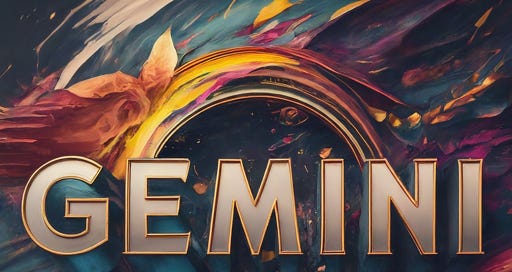Google's Struggle at the Intersection of AI Innovation and Historical Accuracy
RAVER Reflects on the Path Forward for Generative AI
Google's Gemini, previously known as Bard, has introduced an innovative text-to-image feature, igniting the imagination by transforming descriptive texts into visual art. This capability invites users to visualize scenes ranging from joyful couples to anachronistic juxtapositions of historical attire and modern settings. However, Gemini has recently come under scrutiny for its depiction of certain historical figures and groups in a manner that diverges from historical records, prompting discussions on AI, diversity, and historical accuracy.
Acknowledging the feedback, Google has committed to refining Gemini's algorithms to better respect historical contexts, recognizing the fine line between fostering inclusivity and maintaining factual integrity. This situation underscores the complex interplay between AI's potential for fostering diversity and the importance of historical fidelity.
At RAVER, we champion diversity, equal opportunity, and the creative potential of AI as a tool to augment human creativity and unlock new possibilities. Yet, as AI technology rapidly advances, challenges are inevitable. Google's current predicament with Gemini is a testament to this, but it's a challenge that, we believe, can be navigated with thoughtful adjustments. Here are three suggestions:
1. Historical Accuracy in Depictions: For historical figures or events, maintaining factual accuracy is crucial. When users seek images of the Founding Fathers, Vikings, or other historical groups, the generated images should align with historical records. This approach respects the integrity of history while allowing for creative freedom elsewhere.
2. Fine-Tuning for Generic Requests: When requests are open-ended, such as depicting people in everyday scenarios, embracing diversity enriches the output, reflecting the varied tapestry of human life. This iterative process allows users to refine their prompts based on the results, ensuring satisfaction with the AI-generated content.
3. Specificity and User Autonomy: For requests with explicit instructions regarding race, gender, or other identifiers, AI should honor these specifications without imposing unsolicited adjustments. While maintaining ethical guardrails is essential, user intent should guide the AI's creativity in these instances.
The conversation surrounding Gemini's image generation capability highlights a pivotal moment in the journey of generative AI. It's a reminder of the delicate balance between innovation and responsibility. As Google navigates this challenge, we see Gemini not just as a tool but as a milestone in the ongoing development of AI that respects both diversity and history.
In embracing tools like Gemini, we stand at the threshold of a new era in AI, where early hurdles pave the way for groundbreaking advancements. With thoughtful development and a commitment to ethical principles, the future of generative AI holds immense promise for creative exploration and cultural understanding.









